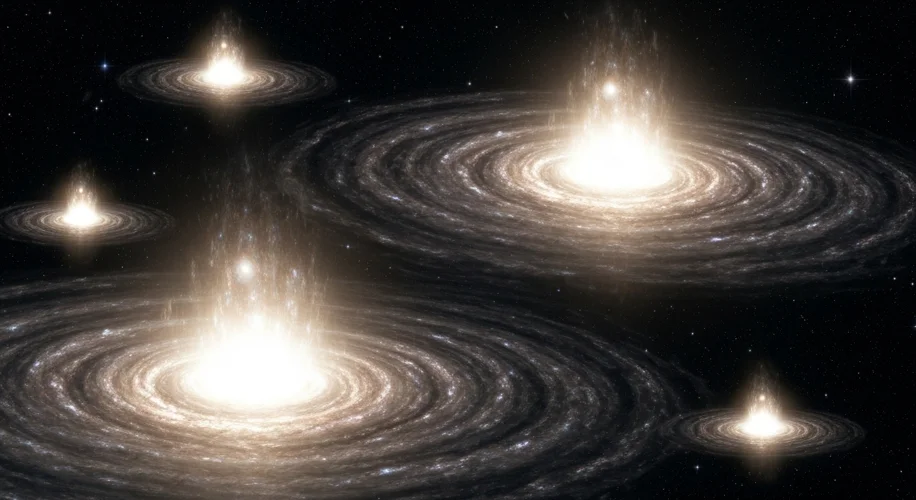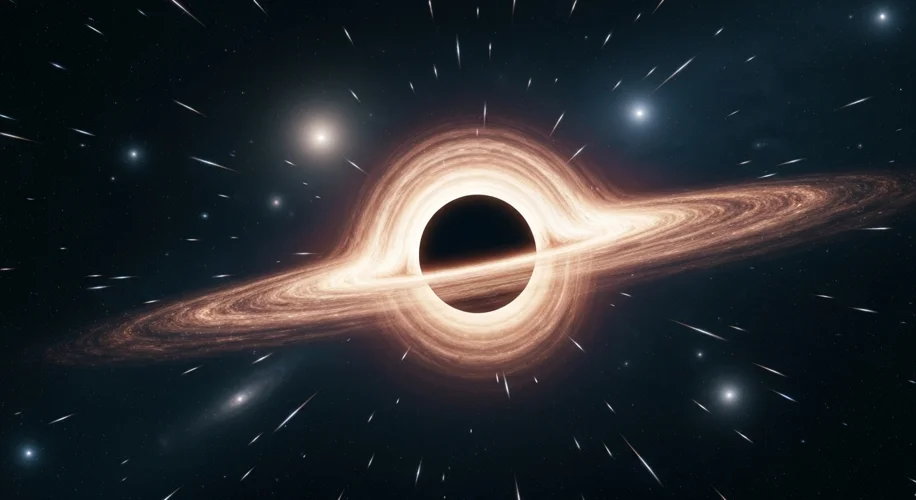The universe, in its earliest moments, was a cauldron of unimaginable energy and nascent structures. For decades, astronomers have peered into this cosmic infancy, a period known as the ‘Cosmic Dawn,’ seeking answers to fundamental questions about how the cosmos evolved. One of the most profound mysteries has been the existence of supermassive black holes (SMBHs) in this primordial era. These celestial behemoths, millions or even billions of times the mass of our Sun, were thought to have formed and grown with astonishing speed, a process that defied our current understanding of cosmic evolution.
Imagine a universe still finding its footing, a mere few hundred million years after the Big Bang. Stars were igniting for the first time, bathing the cosmos in light after eons of darkness. This was the era when the first galaxies began to coalesce, pulling together vast clouds of gas and dust. Within these nascent galactic nurseries, something remarkable was happening: the birth of supermassive black holes. The prevailing theories suggested that SMBHs grew from the accretion of matter onto stellar-mass black holes, or perhaps from the direct collapse of massive gas clouds. However, observing these elusive giants in such a distant and obscured epoch presented an immense challenge.

The ‘Cosmic Dawn’ is shrouded in a thick veil of neutral hydrogen, a relic of the universe’s early state. This cosmic fog effectively obscured the faint light from the first stars and galaxies, making them incredibly difficult to detect. Furthermore, the very processes that create active SMBHs – the rapid accretion of matter – often involve immense amounts of dust, which further acts as a cosmic curtain, hiding these objects from our view.
This is where the cutting edge of astronomical technology comes into play. Powerful new telescopes, such as the James Webb Space Telescope (JWST), have been instrumental in piercing this cosmic veil. JWST’s unparalleled sensitivity in infrared light allows it to detect the faint, redshifted signals from the distant universe, effectively looking back in time to witness the formation of the first celestial structures.
Recent groundbreaking observations have finally provided compelling evidence for the existence of these early SMBHs. Astronomers, using JWST’s advanced instruments, have identified several extremely luminous and distant galaxies that host actively growing black holes. These black holes are consuming matter at rates far exceeding anything observed in the present-day universe, confirming their presence and rapid growth in the ‘Cosmic Dawn.’
One particular discovery, highlighted in recent headlines, points to SMBHs that are not only present but are already ‘supermassive’ when the universe was incredibly young. These findings suggest that the seeds of these giants were sown even earlier than previously thought, or that their growth mechanisms were far more efficient. This forces a re-evaluation of theoretical models. Were these SMBHs born from the direct collapse of pristine, metal-free gas clouds, bypassing the need for stellar-mass seeds? Or did early galaxies form and evolve much faster, providing more fuel for black hole growth?
The implications of these discoveries are profound. The existence of SMBHs in the early universe challenges our understanding of galaxy formation and evolution. Black holes are not just passive entities; they actively influence their host galaxies through feedback mechanisms, shaping star formation and the distribution of matter. Finding them so early suggests they played a crucial role in the cosmic drama from its very beginnings.
This ongoing quest to understand the ‘Cosmic Dawn’ and its most enigmatic inhabitants continues to push the boundaries of our knowledge. Each new observation brings us closer to unraveling the universe’s earliest secrets, reminding us that the cosmos is a place of constant surprise and wonder, where the most elusive giants may be hiding in plain sight, enshrouded by the very dust of creation.

